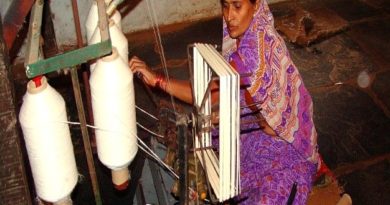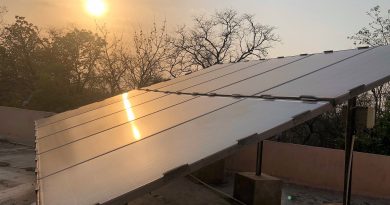Rooftop Solar (RTS) in India
In a Grid connected Rooftop Solar or RTS plant, the DC power generated from PV panels during the day time can be utilized for powering captive loads and for feeding excess power to the grid. If solar power is not sufficient due to cloud cover or any other factor, the captive loads are served by drawing power from the grid. 1 kWp Solar power can be generated from about 10 sqm area (A good rule of thumb is that you need 100 square feet of roof space for every 1 kW of conventional solar panels). 1 Kw capacity solar system generates 1600 – 1700 kWh of electricity per year or around 4 kWh units per day. RTS systems from 1 kWp upto 500 kWp can be set up on the roofs under the Central programme.
RTS projects provide a clear opportunity as they do not require pooling of land or separate transmission facilities and have minimal technical losses, unlike ground mounted solar projects.
Discoms also benefit in multiple ways: –
- RTS project enables them to meet their renewable purchase obligations (RPOs) which are targeted at 8% of electricity consumption, excluding consumption already supplied by hydropower.
- Electricity from RTS systems will help them manage daytime peak loads, which are projected to become more widespread as India’s economy grows.
- Localized generation of power helps to avoid the need to buy costly power
- RTS systems help utilities address critical issues such as high transmission and distribution losses
- They make the consumer an active investor & a participant in energy sector.
Realizing, its immense potential, the Government of India has set a target of 40 GW of capacity addition to come through solar PV rooftop systems by 2022.
The following two models of development of RTS are popular: –
- Capex model (ownership model)-investment is made by the rooftop owner and the bids are invited on project cost
- RESCO (PPA) model- project investment is made by the developer and the bids are invited on tariff basis with long term PPA
The Benchmark cost as agreed by the MNRE (Ministry of New and Renewable Energy), Government of India is :-
| Capacity | Benchmark Cost (Rs/Wp) |
| Above 1 kW and up to 10 kW | 60 |
| Above 10 kW and up to 100 kW | 55 |
| Above 100 kW and up to 500 kW | 53 |
The above costs are inclusive of total system cost and its installation, commissioning, transportation, insurance, 05 years AMC/CMC, applicable fees and taxes.
India has achieved a cumulative rooftop solar installation of 1354.12 MWp up to 31st Dec 2018.
You can read about the frequently asked questions about the RTS systems here.
Feel free to contact us on solarpost@solarpost.in for any queries related to Rooftop Solar Systems or to discuss your need for Rooftop Solar System.
References: –
- Agenda for national review meeting of state principal secretaries and state nodal agencies of renewable energies on 23rd and 24th Jan 2017, New Delhi
- https://mnre.gov.in/sites/default/files/webform/notices/Off_Grid-&-Grid-Benchmark-Cost-2018-19.pdf




Pingback: Due O&M Services is a must for the growth of Solar Rooftop sector - SolarPost